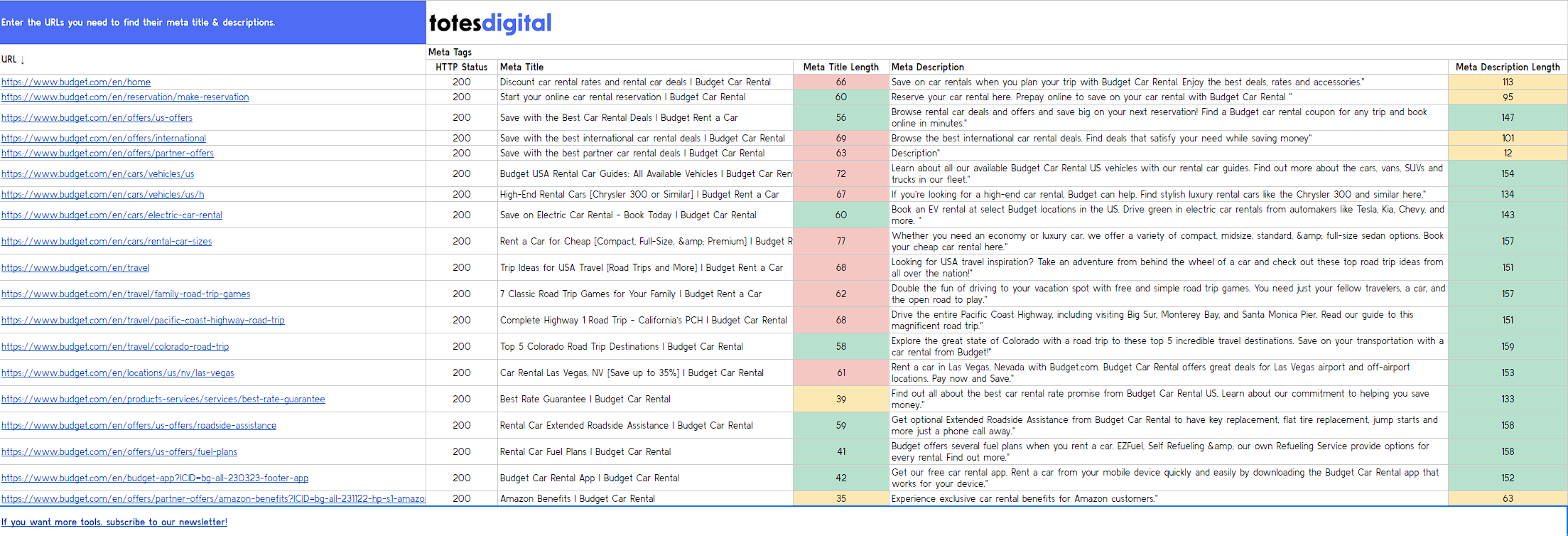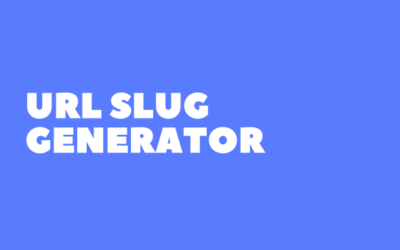How to Analyze Meta Tags: SEO Meta Tag Spreadsheet

How to Write a Good SEO Title?
Writing a good SEO title is crucial for attracting visitors to your website and improving your search engine rankings. Here are some essential tips to craft effective SEO titles:
Incorporate Relevant Keywords: Identify the primary keywords that accurately represent the content of your page. Include these keywords naturally within the title, preferably towards the beginning.
Keep it Concise and Informative: Aim for titles between 50-60 characters to avoid truncation in search results. Ensure the title clearly conveys the essence of your page’s content, enticing users to click.
Write for Humans, Not Just Search Engines: While keywords are important, prioritize crafting a title that appeals to human readers. Use engaging language and avoid keyword stuffing, which can negatively impact user experience and search engine rankings.
Utilize Strong Verbs and Power Words: Employ active verbs and impactful words that capture attention and convey value. For example, instead of “Best Headphones,” consider “Experience Immersive Audio with the Best Headphones.”
Consider Numbers and Emojis: Incorporating numbers and relevant emojis can make your titles stand out in search results and add a touch of personality.
Include Brand Name and Location (If Applicable): For business websites, include your brand name and target location to enhance brand recognition and local search visibility.
Make Titles Unique for Each Page: Avoid duplicate titles across your website. Each page should have a unique and relevant title that reflects its specific content.
Optimize for Click-Through Rate (CTR): Craft titles that generate curiosity and encourage users to click. Use strong action verbs and highlight unique selling points or benefits.
Align with Search Intent: Understand the intent behind user search queries and tailor your titles accordingly. If users are seeking information, provide clear and concise answers. If they’re looking for products or services, highlight the benefits and value you offer.
How to Write a Good Meta Description?
A well-crafted meta description plays a pivotal role in attracting visitors to your website and enhancing your search engine rankings. It serves as a concise and informative snippet that summarizes the content of your page, enticing users to click on your link in search results. Here’s a guide to writing effective meta descriptions:
Keep it Concise and Informative: Aim for a meta description between 155-160 characters to ensure it doesn’t get truncated in search results. Provide a clear and concise overview of your page’s content, highlighting its key points and benefits.
Incorporate Relevant Keywords: Strategically include primary keywords related to your page’s content. However, avoid keyword stuffing, as it can negatively impact user experience and search engine rankings.
Write for Humans, Not Just Search Engines: Prioritize crafting a compelling description that appeals to human readers. Use natural language and avoid technical jargon or overly promotional language.
Highlight Unique Selling Points (USPs): Emphasize what sets your page apart from others. Showcase the benefits and value your content offers, urging users to visit your site to learn more.
Craft a Call to Action (CTA): Include a clear and concise CTA that encourages users to take action, such as “Learn More,” “Shop Now,” or “Sign Up.”
Align with Search Intent: Understand the intent behind user search queries and tailor your meta description accordingly. If users are seeking information, provide a brief answer and direct them to your page for more details. If they’re looking for products or services, highlight the benefits and value you offer.
Make Descriptions Unique for Each Page: Avoid duplicate meta descriptions across your website. Each page should have a unique and relevant description that reflects its specific content.



